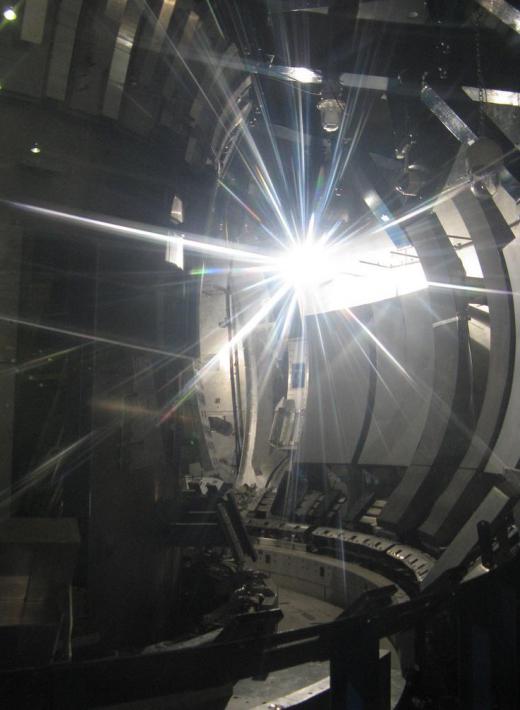What is Magnetic Confinement Fusion?
 Michael Anissimov
Michael Anissimov
Magnetic confinement fusion is an approach to nuclear fusion that involves suspending a plasma (ionized gas) in a magnetic field and raising its temperature and pressure to great levels. Nuclear fusion is a type of nuclear energy produced when light atomic nuclei -- hydrogen, deuterium, tritium, or helium -- are fused together at great temperatures and pressures. All the Sun's light and heat derives from nuclear fusion reactions ongoing in its core. It is through this that the Sun can exist at all -- the outward pressure of the fusion reactions balance the tendency towards gravitational collapse.
Though mankind has harnessed fission energy -- breaking apart heavy nuclei -- for nuclear power, successful fusion power still eludes us. Thus far, every attempt at generating fusion power consumes more energy than it produces. Magnetic confinement fusion is one of two popular approaches to nuclear fusion -- the other is inertial confinement fusion, which involves bombarding a fuel pellet with high-powered lasers. There is currently one multi-billion dollar project pursuing each path -- the National Ignition Facility in the United States is pursuing inertial confinement fusion, and the International Thermonuclear Experimental Reactor, an international project, is pursuing magnetic confinement fusion.

Experiments in magnetic confinement fusion began in 1951, when Lyman Spitzer, a physicist and astronomer, built the Stellerator, a figure-eight shaped plasma confinement device. A major breakthrough came in 1968, when Russian scientists presented the tokamak design to the public, a torus that would be the design of most magnetic confinement fusion devices to come. In 1991, there was another step forward with the construction of START (Small Tight Aspect Ratio Tokamak) in the UK, a spheromak, or a spherical tokamak. Testing showed this device to be about three times better than most tokamaks at initiating fusion reactions, and spheromaks continue to be an ongoing area of investigation in fusion research.

In order for the fusion reactions to be efficient, the center of a tokamak reactor has to be heated to temperatures around 100 million Kelvin. At such high temperatures, the particles have tremendous kinetic energy and are constantly trying to escape. One fusion research compares the challenge of magnetic confinement fusion to that of squeezing a balloon -- if you press hard on one side, it just pops out on another. In magnetic confinement fusion, this "popping out" causes high-temperature particles to collide with the reactor wall, scraping off bits of metal in a process known as "sputtering." These particles absorb energy, lowering the total temperature of the confined plasma and make achieving the right temperature difficult.
If fusion power could be mastered, it could become an unparalleled source of energy for humanity, but even the most optimistic researchers do not expect commercial power generation before 2030.
AS FEATURED ON:
AS FEATURED ON:












Discuss this Article
Post your comments